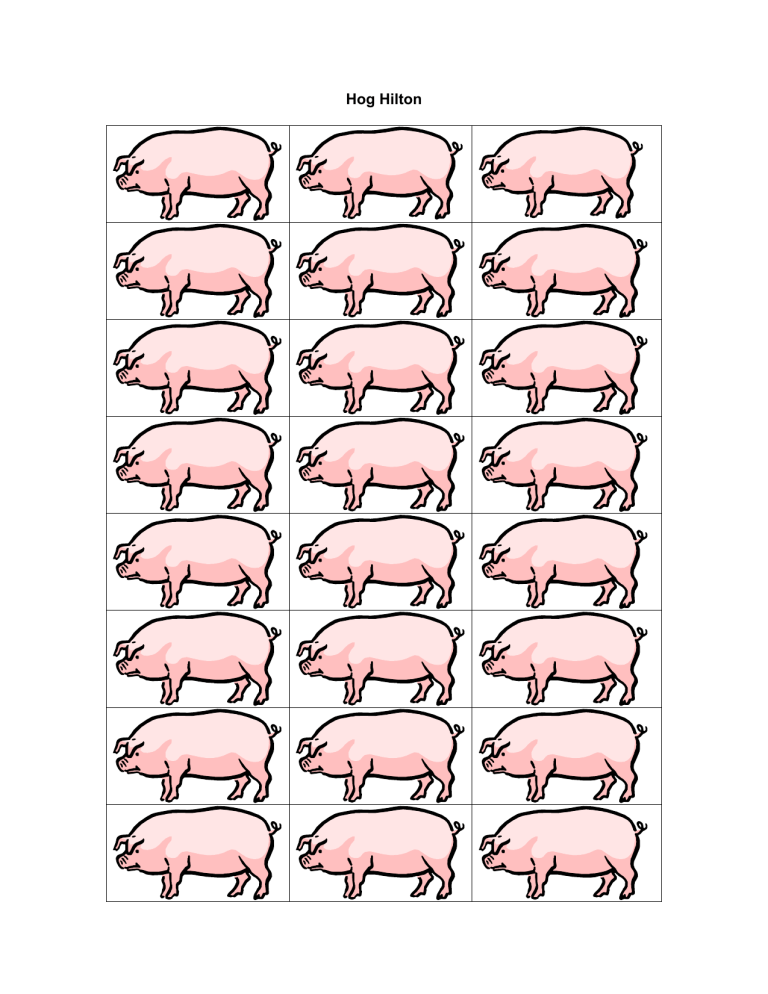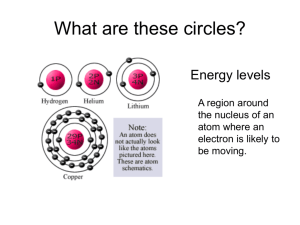
Hog Hilton Hog Hilton You are the manager of a prestigious new hotel in downtown San Antonio—the “Hog Hilton”. It’s just the “snort of the town” and you want to keep its reputation a cut above all the other hotels. Your problem is your clientele. They are hogs in the truest sense. Your major task is to fill rooms in your hotel. The funny shape of your hotel is to accommodate the habits of the hogs. The penthouse is on the first floor and the less desirable rooms are on the top floor. You must fill up your hotel keeping the following rules in mind: 1) Hogs are lazy! 2) Hogs can’t stand each other except when rule #1 forces them to put up with each other. 3) If hogs are in the same room they will face in opposite directions. 4) They stink, so you can’t put more than two hogs in each room. Your hotel looks like the diagram below: 6th floor ___ ___ ___ ___ ___ 5th floor ___ ___ ___ 4th floor ___ 3rd floor ___ ___ ___ 2nd floor ___ 1st floor ___ Your hotel can hold 28 hogs. Sample problems (1) Book 15 hogs into their rooms 6th floor ___ ___ ___ ___ ___ 5th floor ___ ___ ___ 4th floor ___ 3rd floor ___ ___ ___ 2nd floor ___ 1st floor ___ (2) Book 25 hogs into their rooms 6th floor ___ ___ ___ ___ ___ 5th floor ___ ___ ___ 4th floor ___ 3rd floor ___ ___ ___ 2nd floor ___ 1st floor ___ Class work: On your own, fill your hotel for the following days of the week: Monday: 5 hogs Tuesday: 8 hogs Wednesday: 1 hog Thursday: 12 hogs Friday: 23 hogs Saturday: 18 hogs Sunday: 7 hogs On the last page you learned how to fill up an imaginary hotel. Now you will relate this example to electron orbitals. Electron orbitals are modeled by the picture below and are grouped into principal energy levels. 3d ___ ___ ___ ___ ___ n=3 (4s ____) n=3 3p ___ ___ ___ n=3 3s ___ n=3 2p ___ ___ ___ n=2 2s ___ n=2 1s ___ n=1 Questions to think about: (1) Compare this with the Hog Hilton. What are the similarities and the differences? (2) To go between floors on the Hog Hilton did the hogs need to use energy? Would electrons need to use energy to go between orbitals? (3) If only ½ the energy necessary to go between the 1s and 2s orbital was available, will an electron go to the 2s orbital? Examples on how to fill electron orbitals: (1) 7 electrons 3d ___ ___ ___ ___ ___ n=3 (4s ____) n=3 3p ___ ___ ___ n=3 3s ___ n=3 2p ___ ___ ___ n=2 2s ___ n=2 1s ___ n=1 (2) 16 electrons 3d ___ ___ ___ ___ ___ n=3 (4s ____) n=3 3p ___ ___ ___ n=3 3s ___ n=3 2p ___ ___ ___ n=2 2s ___ n=2 1s ___ n=1 Complete an electron orbital diagram/write the electron configuration for the following numbers of electrons: 10, 24, 13, 3, 5, 26, 22, 17 10 electrons ___________________________________________________ 24 electrons ___________________________________________________ 13 electrons ___________________________________________________ 3 electrons ___________________________________________________ 5 electrons ___________________________________________________ 26 electrons ___________________________________________________ 22 electrons ___________________________________________________ 17 electrons ___________________________________________________



